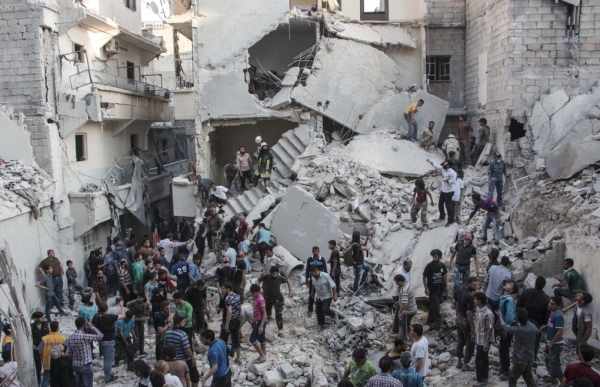Violence from explosives leaves a devastating impact on those who encounter its destruction. Whether or not such attacks are under the direction of the state, victims are often bystanders who were not intended to be caught in the attacks. The majority of casualties from the violence of explosives are civilians, a pattern which has been identified since the inception of the Action on Armed Violence’s (AOAV) Explosive Violence Monitoring project in 2010. Concerns over the perpetuation of the use of explosives on an international scale are growing. Aside from casualties, civilian infrastructure, mental health, and economic conditions are also affected.
The AOAV prepares an Explosive Violence Monitoring Report each year. As a London-based charity, they aim to research and advocate on behalf of civilian victims in order to reduce global armed violence and influence international laws relating to conventional and improvised weapons. Data for the 2018 annual report was collected through cross-examination of English-language media reports that looked at factors such as time, date, location of the incident, the number of casualties, and other damages. A keyword search was conducted over Google News to find the sources. Reports with at least one casualty from the incident caused by explosive weapons with the casualty number being clearly stated were counted. Since media reports do not always accurately capture the type of harm that was produced, the AOAV recognizes that not every incident of violence from explosives is covered in the 2018 report.
The 2018 report states new trends and reinforces the continued existence of others. Firstly, 32,110 deaths and injuries were reported in 2018 as the result of explosive weapons used across the globe. Of these casualties, 70 percent of the victims were civilians. Explosive weapons are utilized most commonly in populated areas, raising the civilian casualty rate to 90 percent. Based on these calculations, approximately 26 civilians die per day from explosive weapons. Civilian deaths and injuries from explosive weapons at the discretion of states accounts to 10,040, and that by the non-state entities accounts to 10,716 which are virtually equal. However, civilian deaths and injuries from explosives saw a 30 percent decrease from2017 to 2018.
Observations about the increased likelihood of civilians being harmed by explosives in populated areas are consistent. Urban residential neighbourhoods prove to be the populated area that is affected by violence from explosives the most. Attacks in urban areas tend to hit multiple neighbourhoods at once, expanding the range of harm. Additionally, markets, villages, and places of worship are other customary locations. Even when explosive weapons are directed by military use, 66 percent of explosive violence incidents specifically targeted civilians in populated areas.
Deaths and injuries caused by explosives occurred in 64 different countries in 2018. Iraq, Syria, and Yemen report some of the highest frequencies, similar to 2017. Syria had the most civilian deaths and injuries in 2018, with Afghanistan, Yemen, Iraq, and Pakistan following closely. The highest rates of civilian casualties to ever take place in Syria were recorded in February and March of 2018. Iraq and Pakistan saw their historically lowest casualty levels in 2018. Afghanistan, Yemen, India, and Libya all underwent extreme increases in casualties.
Though casualties due to the violence of explosives decreased in 2018, there is still much work to do be done. To prevent such violence, states and other actors should end use of all explosive weapons, especially in populated areas. To accomplish this, states should reevaluate their policies and collaborate with international organisations to establish an international political declaration. Furthermore, states, international organisations, and non-governmental organisations should make data about explosive weapons available to the public and habitually monitor their use. This involves looking more closely at the effects on civilian victims above all else.
Changes must be made about the use of explosive weapons in order to put an end to the disproportionate suffering of civilians.
Original report available here:
https://aoav.org.uk/wp-content/uploads/2019/05/Explosive-Violence-Monitor-2018-v5.pdf
To read more, visit:
https://reliefweb.int/report/world/2018-year-explosive-violence
https://aoav.org.uk/explosiveviolence/
Author Christina Borst; Editor Shrabya Ghimire




